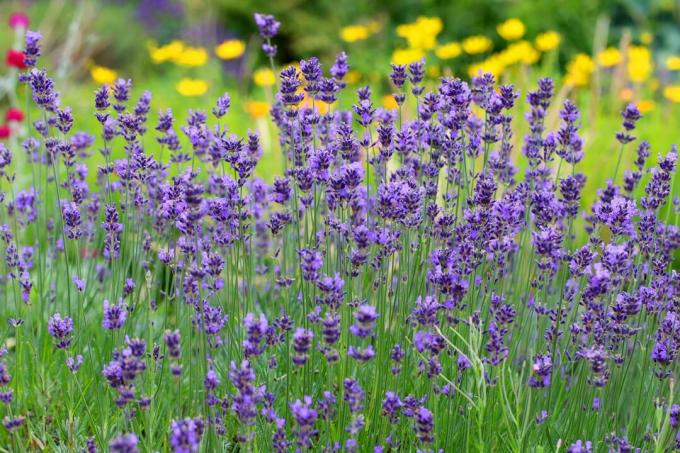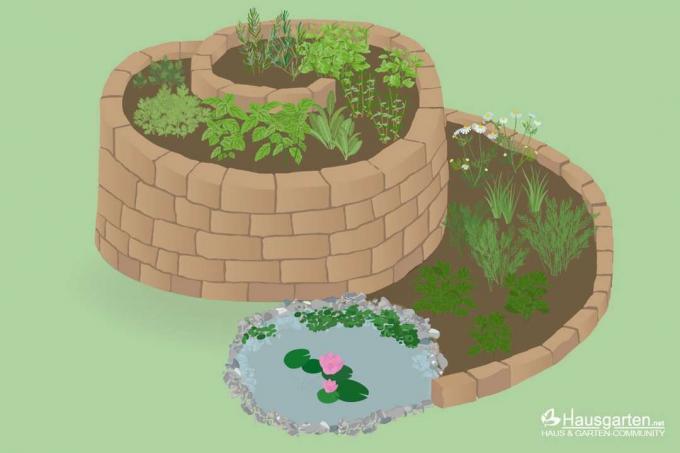

Table of contents
- kind
- sowing
- Floor
- Fertilize
- harvest
- Pour
- diseases and pests
- planting
- Legal
- cut
- Location
- hibernate
A few years ago, stevia was on everyone's lips as a sweetener and sugar substitute. However, the hype has died down in the meantime - not least because stevia was officially approved as a food additive in 2011. The sweet substance is obtained from the leaves of Stevia rebaudiana, a plant that comes from the subtropics but can also be grown quite well here.
kind
stevia Stevia rebaudiana, as it is called biologically, belongs to the stevia genus and the daisy family. Alternative German names are honey herb, honey cress, sweet leaf or sweet herb. It is a perennial, herbaceous plant that can reach a height of 70 to 100 centimeters. She loves the warmth and does not tolerate temperatures and five degrees Celsius. Consequently, it is also not hardy. It originally comes from the border area between Paraguay and Brazil, i.e. from the subtropics. The indigenous people there have used its leaves as a sweetener for centuries. Their ingredients, the steviosides, have a sweetening power that is 150 to 300 times higher than, for example, beet sugar. At the same time, they have an extremely low calorific value. In contrast to other sweeteners, stevia is temperature stable, so it can also be used for baking and cooking.
sowing
If you want to grow stevia plants, you have two options. Either he plants young plants or he gets stevia seeds and sows them. Seeds are available in the herbal sections of garden supply stores. The best time for sowing seeds is April. You have to know that stevia plants are light none. They must not be completely covered with soil. This is how mine works when sowing:
- fill the shallow seed tray with potting soil
- Press the seeds in very lightly
- water well with water
- Place the seed tray on a windowsill on the sunny side
- maintain a minimum temperature of 22 degrees Celsius
If the external conditions are right, then about ten days after sowing, the first signs of germination or growth appear. seedlings. These must then be pricked out before being planted outdoors or in a pot.
Floor
Regardless of whether the stevia plant is cultivated in an outdoor bed or in a plant pot - the soil should always be a balanced mixture of loamy and sandy parts. On the one hand, it must be able to store water well, but on the other hand it must not contribute to waterlogging. Although Stevia rebaudiana needs a lot of water, the plant does not tolerate waterlogging at all. The nutrient content in the soil may be very low. Too much nutrients often leads to the plant catching fungal diseases. In principle, conventional garden soil without a lot of humus is sufficient, which can be mixed with a little sand if necessary.
Fertilize
Great restraint is required when fertilizing the stevia plant. Too much fertilizer can make them very susceptible to fungal diseases. But of course, this plant must also be supplied with nutrients. It is therefore best to mix compost or horn shavings under the soil at least once a year. It is also possible to administer a mineral fertilizer with a relatively low nitrogen content.
harvest

Only the leaves of the stevia plant are harvested. Normally this can be done in September of a year. The leaves are cut off at the petiole with a sharp knife or pruning shears. They can be used fresh or dried in the oven at 50 degrees Celsius. For a larger amount, freezing the leaves is recommended. This is also possible without any problems. Both drying and freezing preserve the leaves and thus ensure a longer usability.
Pour
Stevia rebaudiana is an extremely thirsty plant that doesn't do well with drought. Therefore, there is no way around regular watering. The soil in the root area should always be slightly moist, but never soaking wet. Under no circumstances must it dry out – especially not over a longer period of time. It is always poured in the area of the roots and never from above over the leaves.
diseases and pests
Basically, Stevia rebaudiana is a very robust, resilient plant that is not susceptible to disease. However, the site conditions and care must be right for this. If the nutrient content in the soil is too high or the soil is too wet, there is a risk that the plant will catch fungal diseases. The most common are powdery mildew, collar rot, rust, black spot, damping-off and wilt. If the plant is affected, biological agents from specialist shops can help. Stevia is also eaten or eaten by snails, worms and aphids. eaten up.
planting
Stevia plants can be cultivated both in a plant pot and in a bed. However, planting outdoors should only take place when the temperatures no longer drop below five degrees Celsius. This is usually in late spring or the case in May. To do this, a planting hole must be dug into which the root ball easily fits. Since Stevia rebaudiana is a shallow root, it does not have to be particularly deep. If several stevia plants are applied, there must be a minimum distance of 30 centimeters between them. When planting in a plant pot or planter, a diameter of 20 to 30 centimeters is required. Immediately after planting, water well.
Legal
Strictly speaking, the cultivation of the stevia plant as food is not permitted in Germany and most other countries in the European Union (EU). Although its ingredients are now classified as harmless and thus approved as food additives throughout the EU, this does not apply to the plant itself. Officially, it may only be used as an ornamental plant in the garden or in the field. Anyone who buys stevia young plants in a nursery or garden center will therefore often find the information that the leaves are not suitable for consumption. Of course that's not true. It is purely a matter of legal protection. Anyone who uses stevia leaves to sweeten food does not have to fear legal prosecution. They just can't be circulated.
cut

If the stevia plant is cut back regularly, this basically promotes its growth and above all contributes to the formation of many new leaves. The pruning can be done in the period from May to the end of July. From August it no longer makes sense because the plant simply no longer grows.
Location
As already mentioned, stevia plants love sun and light. In order to thrive, they absolutely need it warm. Consequently, a location that is as sunny as possible is a must. This applies to cultivation outdoors as well as indoors or on the terrace. If necessary, a semi-shady location is also possible, but only if it doesn't get too cold there. The right location is a very important point if stevia cultivation is to succeed. It is also important to remember that the plant can grow up to a meter tall and very bushy. It should therefore be able to unfold freely in all directions.
Tip:
Greenhouses and conservatories are perfect for cultivating Stevia plants. If the temperatures there do not drop below 18 degrees Celsius all year round, they can stay there throughout the winter.
hibernate
The stevia plant is extremely robust and relatively undemanding. However, she does not cope with the cold at all. She definitely wouldn't survive a winter outdoors. And even with cultivation in the apartment, wintering must take place. If the plant has spent the summer outdoors, it must be carefully dug up for the winter and then planted in a pot. It can be overwintered in light or dark. With a bright winter, the shoots will sprout earlier and usually stronger. The ideal hibernation temperature is 13 degrees Celsius. During the winter, watering can be limited to a small amount of water per month.
 garden editorial
garden editorial I write about everything that interests me in my garden.
Learn more about growing herbs

Basil has black dots: what to do?
Especially basil bought in a pot from the supermarket tends to quickly develop black dots or spots on the leaves. This article explains why this is and what helps against it.

14 kitchen herbs that you can really keep in the kitchen
Sometimes a herb garden is only possible on the windowsill. If you don't have your own garden bed, for example, or in the months when the frost freezes the coveted greenery outside. Our list provides an overview of which herbs like the kitchen location permanently.

Parsley turns yellow: Four tips against yellow leaves
If the leaves of the parsley suddenly turn yellow, the so-called parsley disease is usually behind it. This can have many causes. If the outbreak of the disease is to be prevented, only prevention helps. More about this here.

You can combine lavender with these 13 plants
Whether you use it in the kitchen, want to enjoy its fragrance or its beauty, lavender is a must in any garden. Well combined, it can strengthen other plants or protect them from pests. We present the best plant neighbors.

8 tips for cutting and harvesting herbs properly
Fresh herbs from the garden should not be missing in any kitchen. They are versatile, exude pleasant and spicy scents and are a treat for the eye with their pretty flowers. In the kitchen, they can easily replace artificial flavor enhancers.

Herb spiral & herb snail: this is how it's done
A herb spiral or herb snail makes it possible to plant many different varieties in a particularly decorative way. However, this is not the only advantage of these variants of the culture. You can find out how to create them here.



